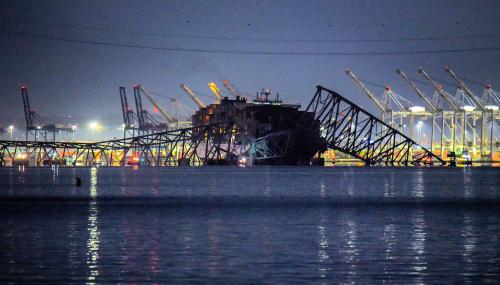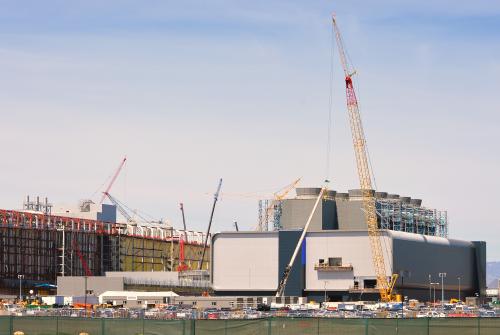For nearly five weeks beginning in mid-February, parts of Jackson, Miss.—the state’s capital and most populous city—faced a water crisis. Two consecutive storms hit the city and led to prolonged freezing temperatures, causing pipes to burst. Thousands of residents were under a boil-water advisory, which was finally lifted on March 18.
Even before the storms hit, Jackson’s water system was a crisis in the making. “The city of Jackson was not ill-prepared based on the winter storms; we were ill-equipped,” said Mayor Chokwe Antar Lumumba on the structural challenges of paying for deferred infrastructure maintenance and legacy costs. “This is because resources are often stripped from the city of Jackson…we don’t enjoy the commensurate support that the city provides the state.”
Jackson’s crisis is tied to its inability to proactively invest in infrastructure upgrades. This inability stems from its ongoing economic and fiscal difficulties—a challenge that many other localities and water utilities face. In addition to a declining population, Jackson’s high percentage of low-income residents—in one of the poorest states in the country—limits steady and predictable revenues for public services, including drinking water and wastewater. Simply charging more for these services isn’t easy either, given widespread affordability issues. Mayor Lumumba has attempted to address these issues through new revenue sources—building off efforts of his predecessor and father Chokwe Lumumba, who died in office in 2014—but significant hurdles remain in addressing the estimated $2 billion backlog in needed water repairs.
This enormous price tag—and the human suffering that accompanies it—represents a failure of state and regional leaders to measure, plan, and coordinate action around infrastructure needs. Overlooking the impacts of uneven infrastructure on different types of households, especially by race and income, is a big part of that failure.
Jackson is a city with one of the largest shares of Black people in America, in the Blackest state in the union. Ideally, infrastructure serves as a shared foundation for economic, environmental, and public health between different neighborhoods and municipalities; however, infrastructure is often poorly maintained or intentionally overlooked in particular places, leading to a lack of access, affordability, and safety for many communities of color. Forward-looking infrastructure plans and projects designed to reduce risks, manage costs, and provide long-lasting benefits require different jurisdictions to work across economic and racial lines—something Mississippi has historically struggled to do. And since infrastructure is designed to be long-lived, these inequitable systems are also long-lived.
In the case of Jackson, legacy infrastructure goes hand-in-hand with a legacy of racism. The costs of legacy infrastructure parallel long-standing economic and racial disparities in the region. Without steady economic growth and shared economic opportunity—in jobs, wages, and other activity—municipalities and water utilities struggle to predictably and equitably generate enough revenue to cover their infrastructure needs. According to Brookings’s Metro Monitor, the Jackson metro area has only increased jobs by 6.6% and gross metropolitan product by 12.4% from 2009 to 2019—ranking 46th and 44th, respectively, out of the country’s 57 large metro areas with at least 500,000 residents. Over the same period, median wages in Jackson declined by 7.6%, the worst of all large metro areas. And while Jackson is closing the employment gap between people of color and white residents, it still ranks 55th out of 57 when it comes to closing the employment gap between the most advantaged and least advantaged neighborhoods.

Jackson’s water crisis was only the latest in a series of acute and chronic challenges. Past winters have seen broken water mains and business closures, while concerns over water quality, access, and affordability have persisted as well. Last year, half a billion gallons of raw sewage leaked into the Pearl River, in addition to 6 billion gallons of minimally treated sewage. And similar to cities such as Flint, Mich., lead pollution has been a concern. In 2016, Jackson warned citizens to take precautions about lead levels in water, but instead of replacing all pipes—a move that could cost billions of dollars that the city does not have—it moved forward with a lower-cost corrosion control contract. In turn, homeowners are continuing to bear responsibility for lead pipes and other health risks even while some are unable to pay for existing bills; in 2019, the city announced it would turn off water for 20,000 residents in an attempt to collect $45 million in back bills.
As the graphic below shows, water-related expenditures in Jackson have become increasingly untethered to revenues. Because the city has not made long-term and continued investments in its infrastructure, sporadic crises have led to increasingly expensive repairs.

Rising costs and declining revenues—combined with a lack of proactive infrastructure planning and investment in particular neighborhoods of need—have put Jackson in a difficult position. Present and past infrastructure decisions—not only around drinking water and wastewater, but also roadways, mass transit, electricity, and broadband—can lock in structural inequities. Black-majority places such as Jackson, Baltimore, Detroit, and Flint are burdened by both a legacy of infrastructure and racism, setting the stage for future tragedies.
But just as infrastructure can lead to long-lasting costs, it can also be a foundation for long-lasting benefits. Better defining and addressing Jackson’s legacy infrastructure challenges can chart a new path. That requires public and private leaders at the state, regional, and city level—including water utilities—to talk about future and existing infrastructure needs in terms of the most vulnerable households, engage with a greater variety of residents, and test new projects and ideas. For instance, more coordinated “One Water” planning efforts can bridge policy and investment gaps among municipal leaders while involving community-based organizations, workforce development bodies, and other groups that have long been ignored. Better measuring water affordability needs and launching more robust customer assistance programs can make a difference too. And seeking more resilient solutions, including green infrastructure upgrades, can lead to lasting economic and environmental returns.
It looks like President Joe Biden’s next policy priority will be infrastructure. The administration would be wise to acknowledge that simply spending more money is not necessarily the solution. Instead, they should ensure that money is spent to maintain and rebuild the legacy infrastructure that has historically failed Black communities like those in Jackson.









Commentary
In Jackson, Miss., a water crisis has revealed the racial costs of legacy infrastructure
March 29, 2021